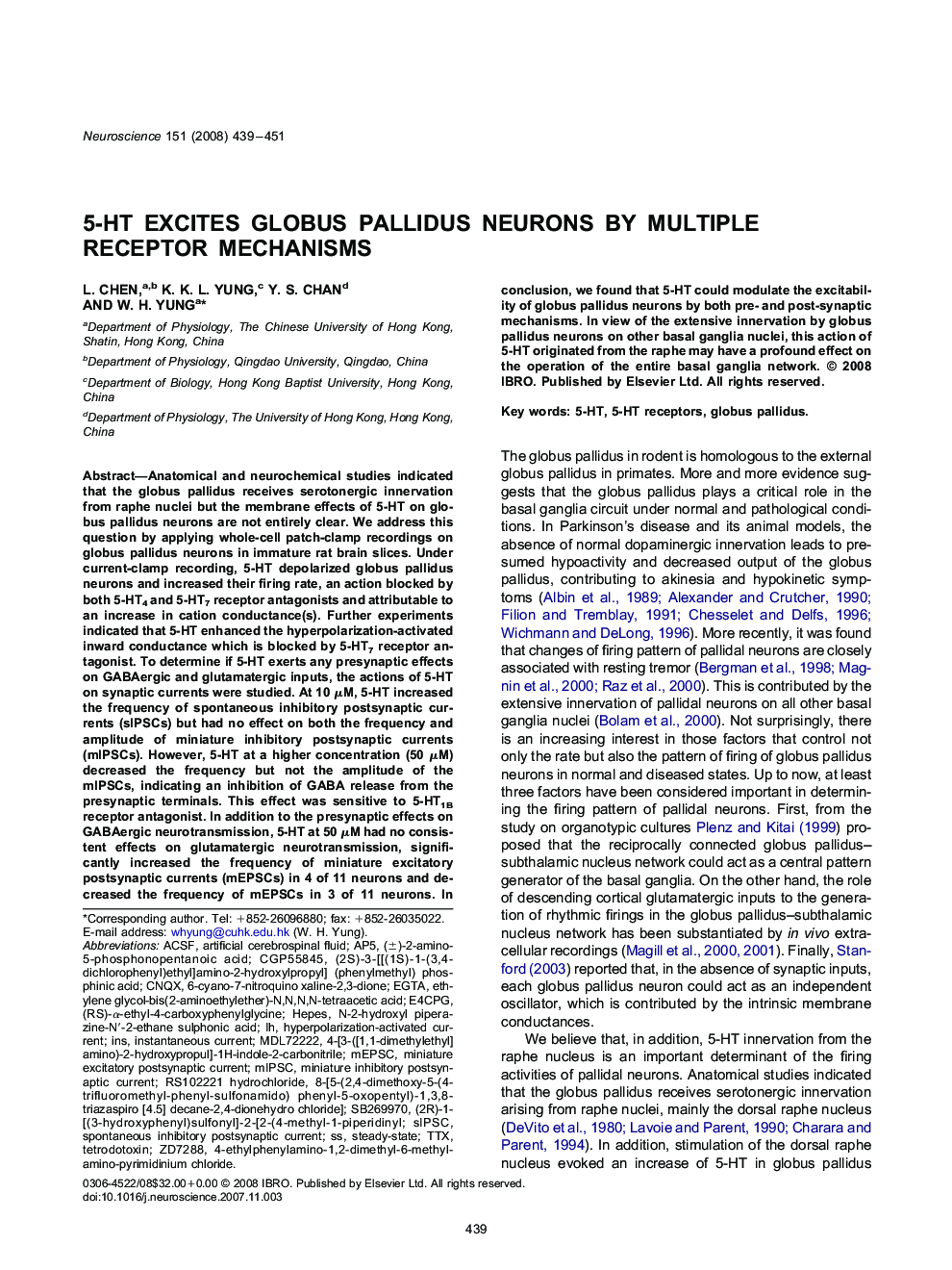| Article ID | Journal | Published Year | Pages | File Type |
|---|---|---|---|---|
| 4340689 | Neuroscience | 2008 | 13 Pages |
Anatomical and neurochemical studies indicated that the globus pallidus receives serotonergic innervation from raphe nuclei but the membrane effects of 5-HT on globus pallidus neurons are not entirely clear. We address this question by applying whole-cell patch-clamp recordings on globus pallidus neurons in immature rat brain slices. Under current-clamp recording, 5-HT depolarized globus pallidus neurons and increased their firing rate, an action blocked by both 5-HT4 and 5-HT7 receptor antagonists and attributable to an increase in cation conductance(s). Further experiments indicated that 5-HT enhanced the hyperpolarization-activated inward conductance which is blocked by 5-HT7 receptor antagonist. To determine if 5-HT exerts any presynaptic effects on GABAergic and glutamatergic inputs, the actions of 5-HT on synaptic currents were studied. At 10 μM, 5-HT increased the frequency of spontaneous inhibitory postsynaptic currents (sIPSCs) but had no effect on both the frequency and amplitude of miniature inhibitory postsynaptic currents (mIPSCs). However, 5-HT at a higher concentration (50 μM) decreased the frequency but not the amplitude of the mIPSCs, indicating an inhibition of GABA release from the presynaptic terminals. This effect was sensitive to 5-HT1B receptor antagonist. In addition to the presynaptic effects on GABAergic neurotransmission, 5-HT at 50 μM had no consistent effects on glutamatergic neurotransmission, significantly increased the frequency of miniature excitatory postsynaptic currents (mEPSCs) in 4 of 11 neurons and decreased the frequency of mEPSCs in 3 of 11 neurons. In conclusion, we found that 5-HT could modulate the excitability of globus pallidus neurons by both pre- and post-synaptic mechanisms. In view of the extensive innervation by globus pallidus neurons on other basal ganglia nuclei, this action of 5-HT originated from the raphe may have a profound effect on the operation of the entire basal ganglia network.
